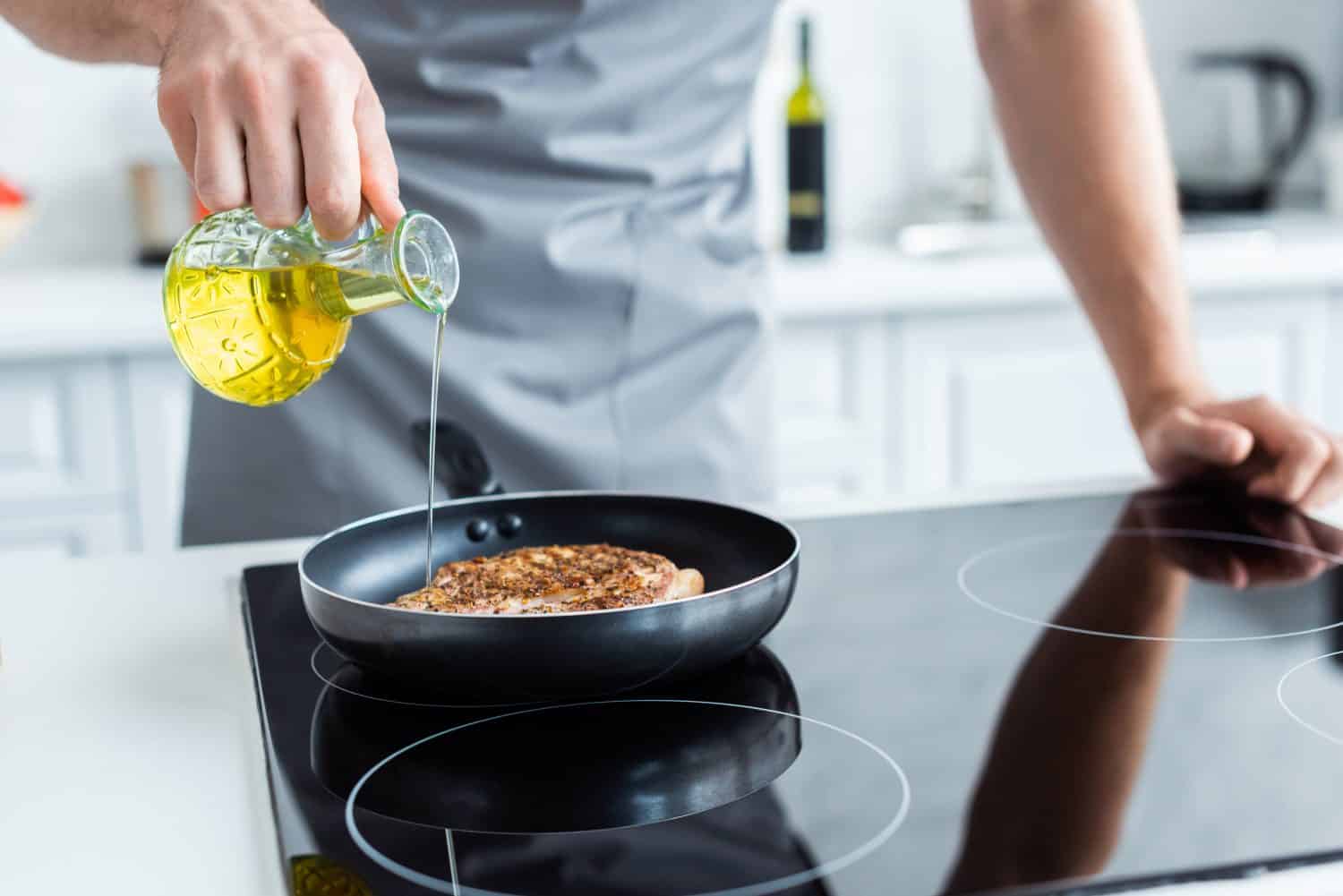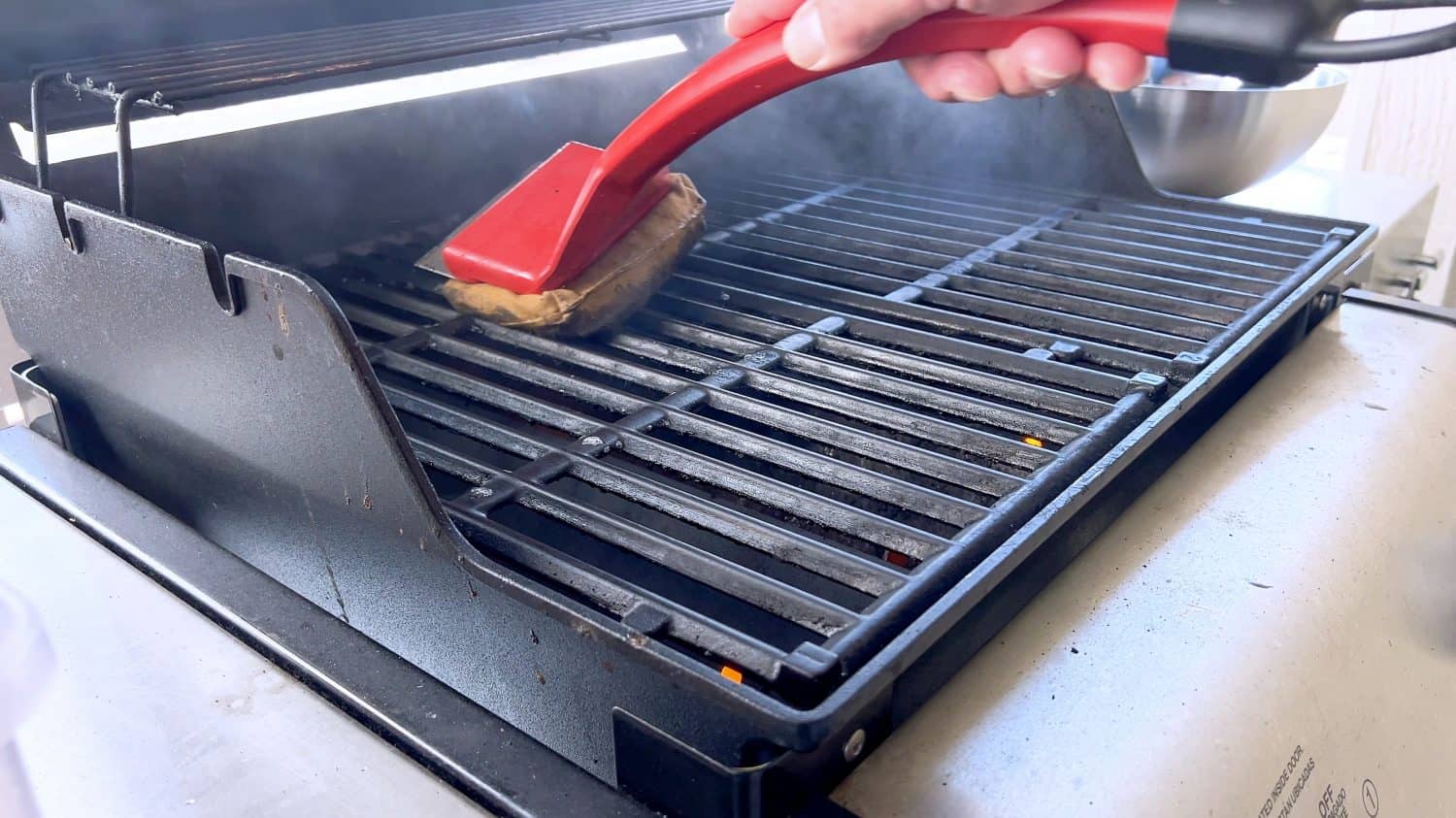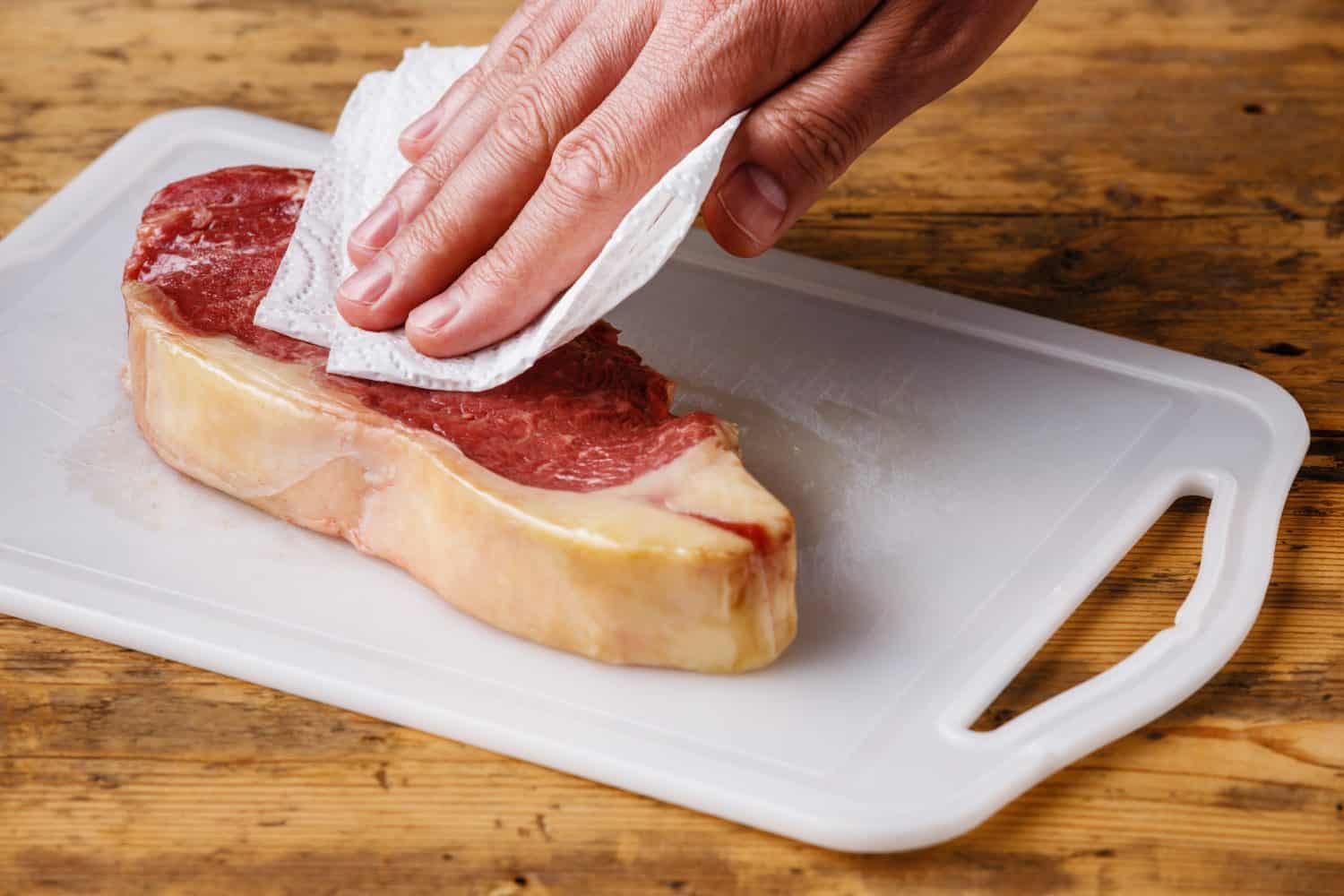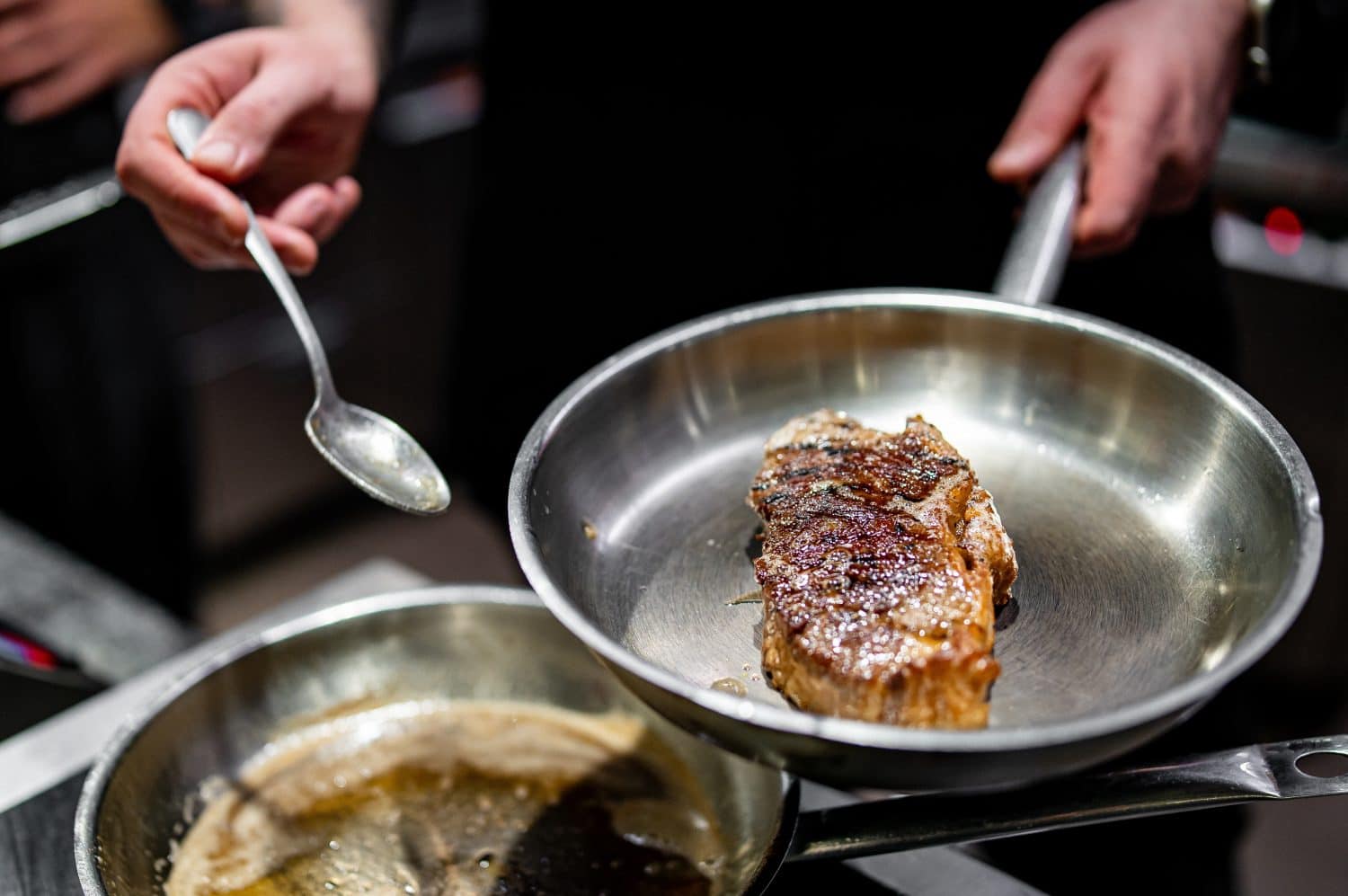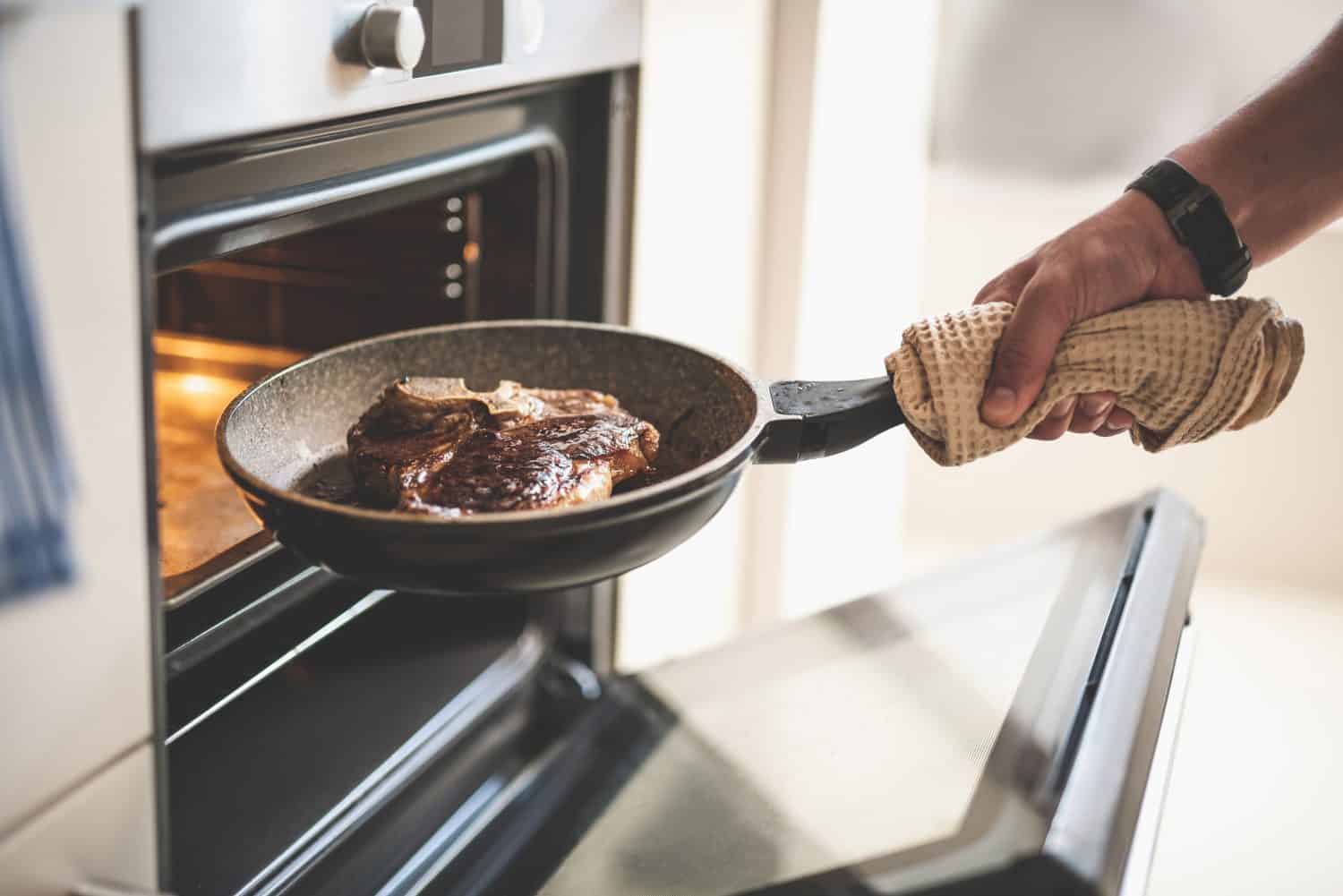Many people believe that cooking a tender, juicy steak is a difficult thing to achieve, powered by witchcraft and occult magic. However, what’s typically happening is that these people just aren’t cooking their steaks right.
A lot of people make silly yet common mistakes when cooking steak that are impacting their steak’s quality. Buying the highest quality meat won’t protect it from a poor quality cook. Small mistakes can impact the steak’s quality a lot, causing you to end up with dry, tough meat instead of the ideal succulent steak.
Summer barbecues are a huge part of American culture, and with holidays like the Fourth of July approaching fast, you’ll need to impress your friends and family at the cookout. Let’s look at some of the major factors that influence how your steak comes out. (We’ve also compiled a list of 10 mistakes you’re making when you cook fish.)
To choose the information for this list, we looked at high-quality guides on how to cook steak, such as Masterclass, which features guides taught by professionals. We also looked at other published lists to see what food enthusiasts believed were the most common mistakes when cooking steak. These lists allowed us to narrow down what mistakes were more or less common. We also ensured that we checked the science behind each section to determine whether these had a basis in fact or if they were simply preferences. We also checked to ensure that our recommendations followed general food safety guidelines.
Not Using Seasoning
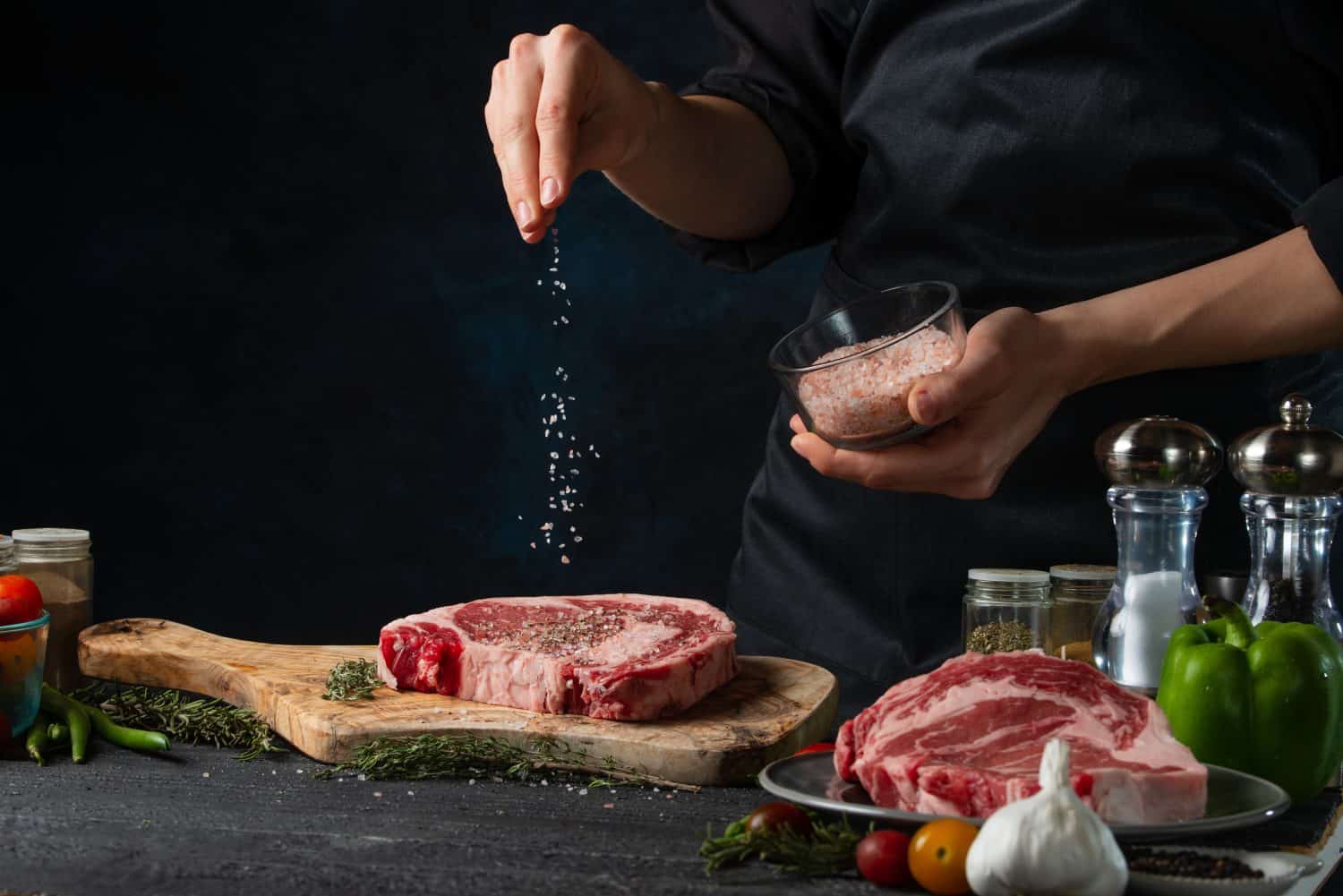
One of the most popular misconceptions is that if you season your steak, the seasoning will overpower the natural flavors of the beef. While it is possible to overseason anything, not using any seasoning will result in a steak that is bland compared to one that is properly seasoned. The trick is to use the right seasonings in the right amounts. You want seasonings that will compliment the flavors of the beef rather than overpower them. For this, the first thing you should look at is your salt and pepper choices. Kosher, non-iodized salt is best for salting steak and you should aim to use fresh, cracked black pepper instead of preground pepper wherever you can. For additional flavor, you’ll want to choose an herb that goes well with beef, such as thyme, rosemary, or oregano.
When you go to season your steak, you’ll want to use a little bit of oil or fat (more on choosing the right oils below) to help the seasoning stick to the meat. Coat both sides evenly about an hour or two before you cook the steak to allow the meat to reabsorb the moisture.
Cooking Cold Steak
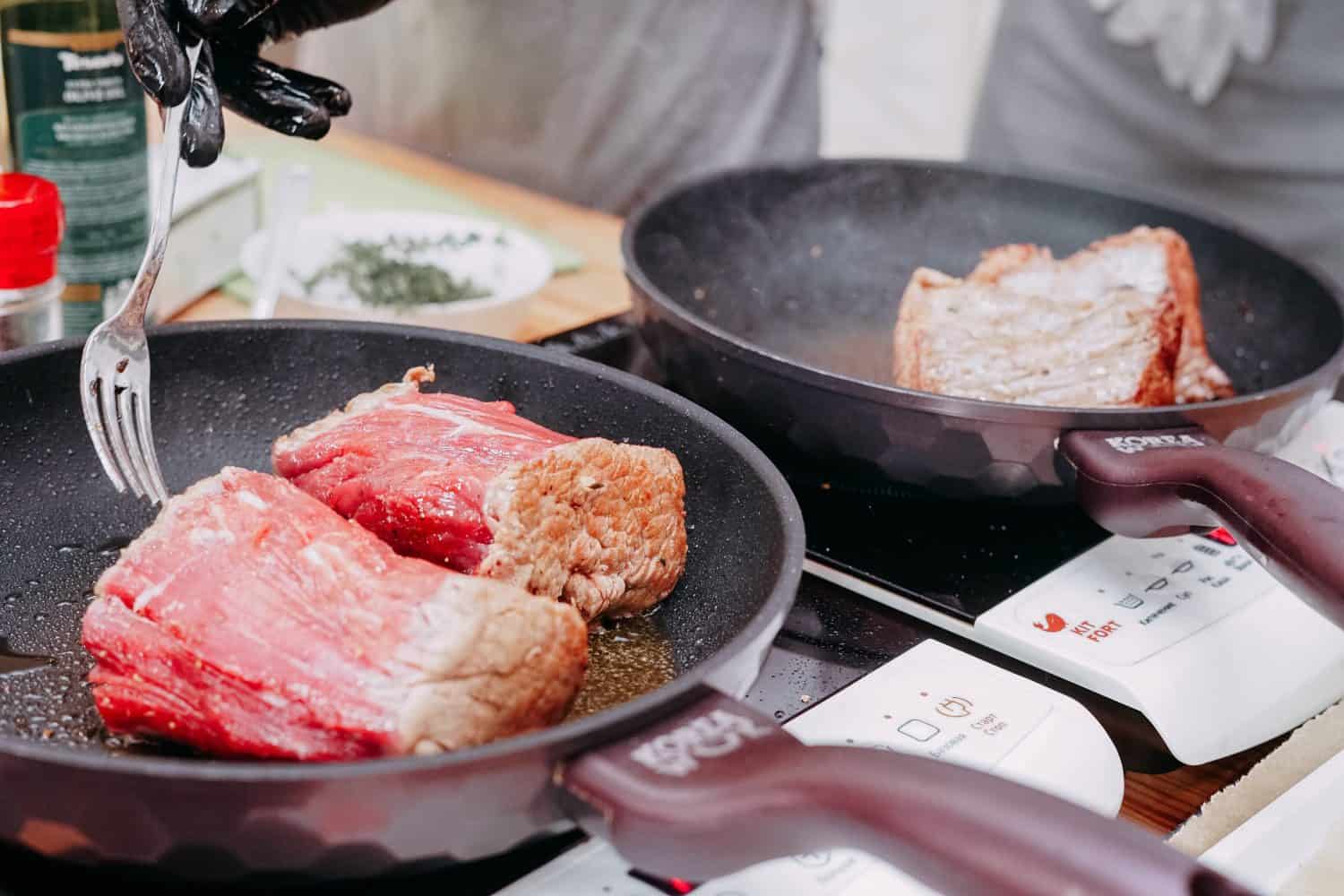
This topic is fairly divisive and people regularly argue whether it’s necessary to let your steak sit and come to room temperature before you cook it. The truth is that it isn’t always necessary to let your steak reach room temperature. For instance, if the meat is frozen, thawing the steak will cause it to lose moisture and become drier. However, not allowing a fresh steak to reach room temperature before you cook it can result in uneven cooking. The ultimate result could be a perfect crust on the outside with a cold center or a hot center and burned crust. Additionally, if the steak is cold and needs to be heated more thoroughly, it can cause the steak to dry out and shrink more, giving you less overall meat when eating.
There are times when you could take a fresh steak directly from the fridge and throw it on the grill, though. If you brine the steak in salt, you can add it right to the pan or grill without letting it sit. Additionally, if you plan to finish the steak in the oven, it isn’t necessary to bring it to room temperature.
Getting the Wrong Cut of Steak
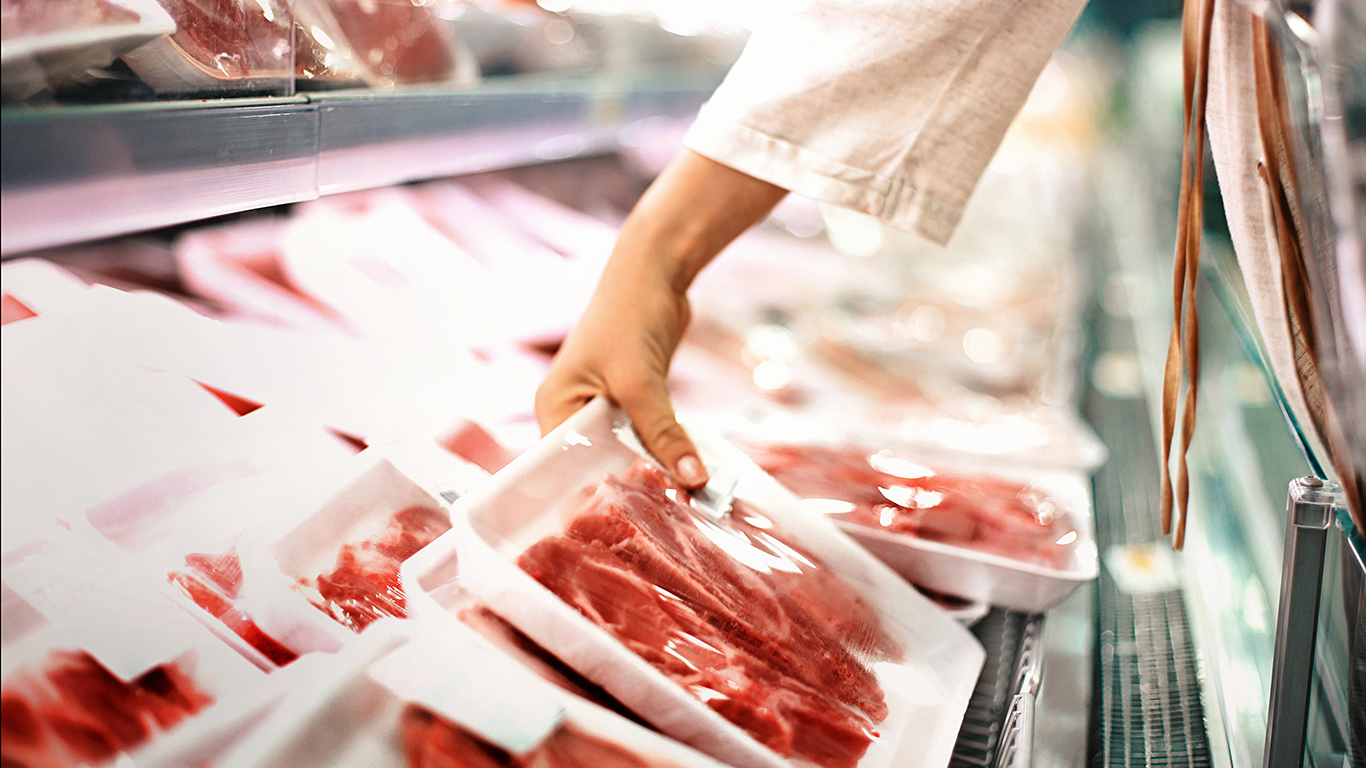
Closeup side view of unrecognizable woman chossing some fresh meat at local supermarket. The meat is cut into chops and packed into one pound packages. She has reached for a package of beef sirloin steaks.
It’s crucial to get the right cut of steak for your personal preferences in taste, texture, and cooking style. Not all cuts of steak cook the same and taste the same. Of course, they have different health benefits and drawbacks as well. Thus, understanding the mechanics of the steak you’ve chosen and how you’re meant to cook and eat it is necessary to get a meal that doesn’t have the taste and texture of a leather shoe.
T-bone steaks are best for a charcoal grill, but a boneless ribeye steak is going to have lines of fat running through it that make it more suitable for a frying pan. If you throw a marbled, boneless ribeye on a charcoal grill, those lines of fat are going to melt into the charcoals and be lost instead of infusing the meat with their rich flavor. Cuts of beef made from parts of the cow that are dense with muscle aren’t suitable for frying or grilling at all. These are better for roasting, slow-cooking, and braising.
If you aren’t sure what the best cut of beef for your situation is, ask an experienced butcher. They’re going to know the most about any specific cut of beef that you can find. By this, we mean an independent butcher and not the deli worker at your supermarket. While deli workers are important, they aren’t the same as a butcher.
Choosing a Lean Cut of Beef
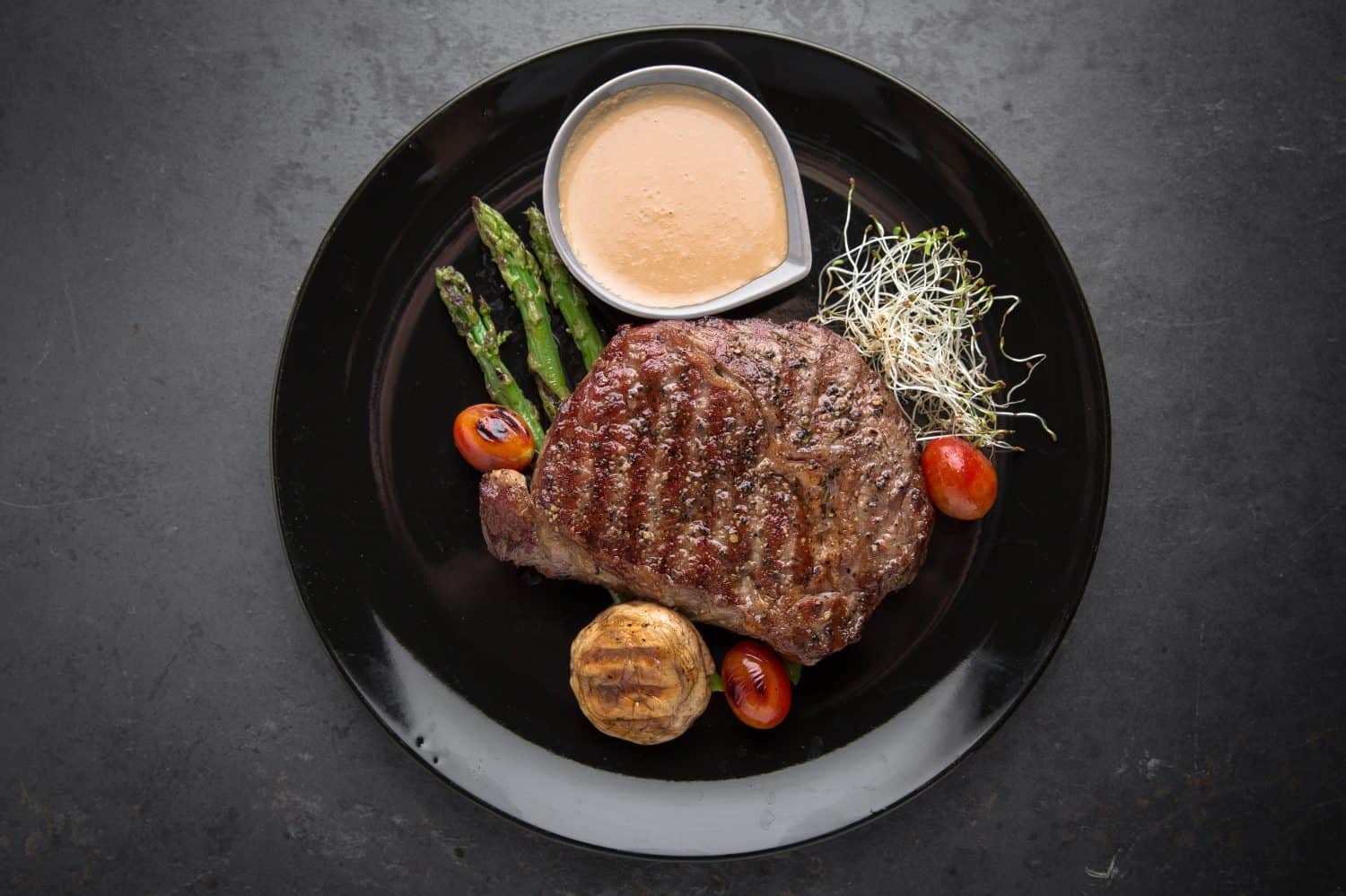
Lean meats are important for their health benefits and they do suit certain cooking types and recipes. However, for a steak—a hunk of meat thrown on a grill or frying pan—you shouldn’t shy away from a fatty cut of beef. Fat is what provides the most flavor and in the specific cooking conditions associated with steaks, fat is a crucial aspect of the cooking process that shouldn’t be overlooked, especially if you’re frying your steak in a frying pan.
Marbled steak is going to be a more tender and juicy cut of meat that suits the physical eating process of steaks. If you do the same with a lean cut of steak, it’s going to be tough and dry, making the eating process more like chewing on leather than biting into a succulent piece of meat. A leaner meal probably shouldn’t be steak at all if you’re planning on grilling or frying the meat. Lean grilling options like chicken are much better.
Lean cuts of steak can be used with other cooking methods that better lend to their physical attributes. However, you’d have a nicer eating experience if you kept them off the grill.
Turning Steak on the Grill Only Once
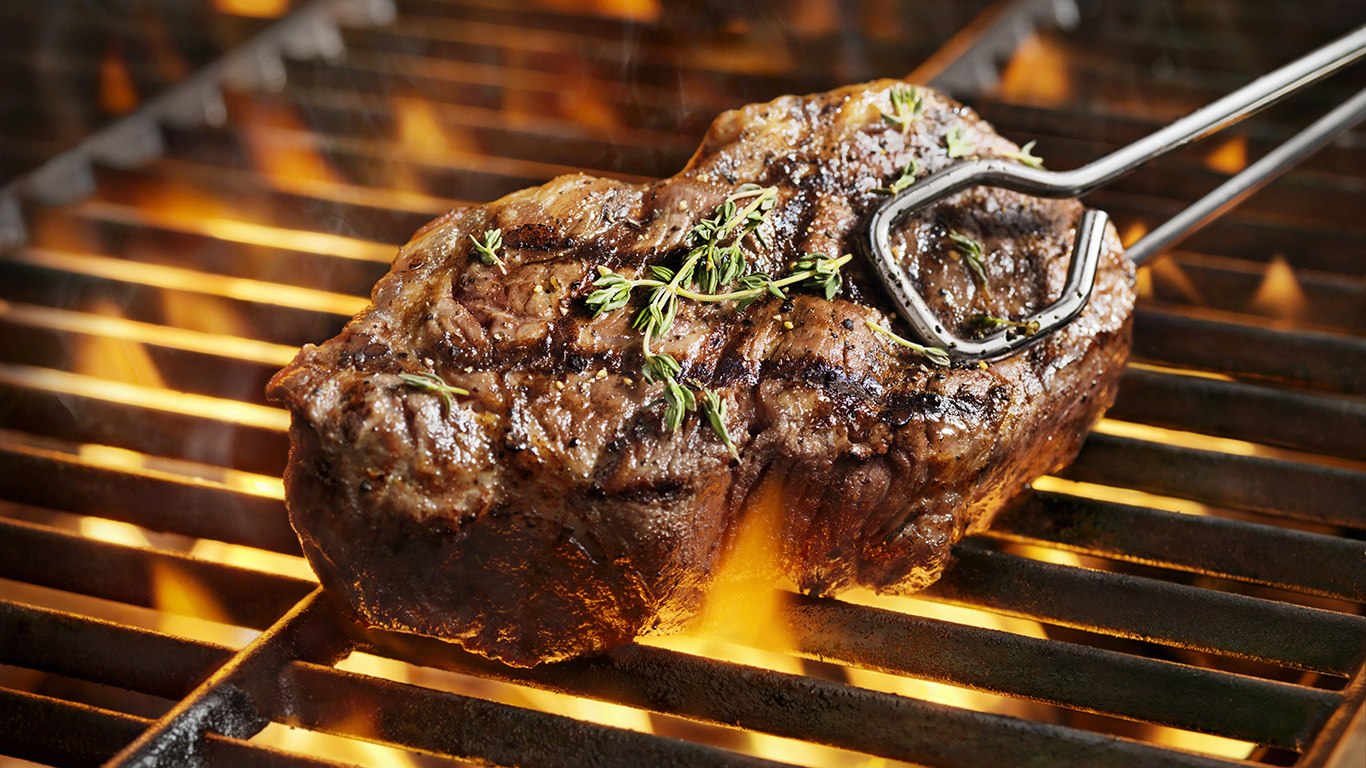
A common misconception is that leaving your steak to sit on the grill will keep it tender and juicy, but with a charcoal and gas grill, this is actually more likely to dry the steak out. The only thing that leaving your steak sitting on the grill will change is the presence and appearance of the grill marks on the meat, which while nice, are mostly cosmetic and don’t actually make the steak taste any better. Flipping the steak multiple times gives the effect of cooking both sides at once, which cooks the meat faster and keeps the steak from getting dry and tough. In fact, flipping the steak a few times can help it cook up to 30% faster according to some food experts.
One thing that’s crucial when flipping your steak is to use tongs instead of a fork. The steak’s juices are held inside the meat and when you pierce the meat with a fork, you let all those juices out. Tongs preserve the crust and ensure that the juices stay where they’re meant to be: inside the steak.
Choosing Only Supermarket Selections
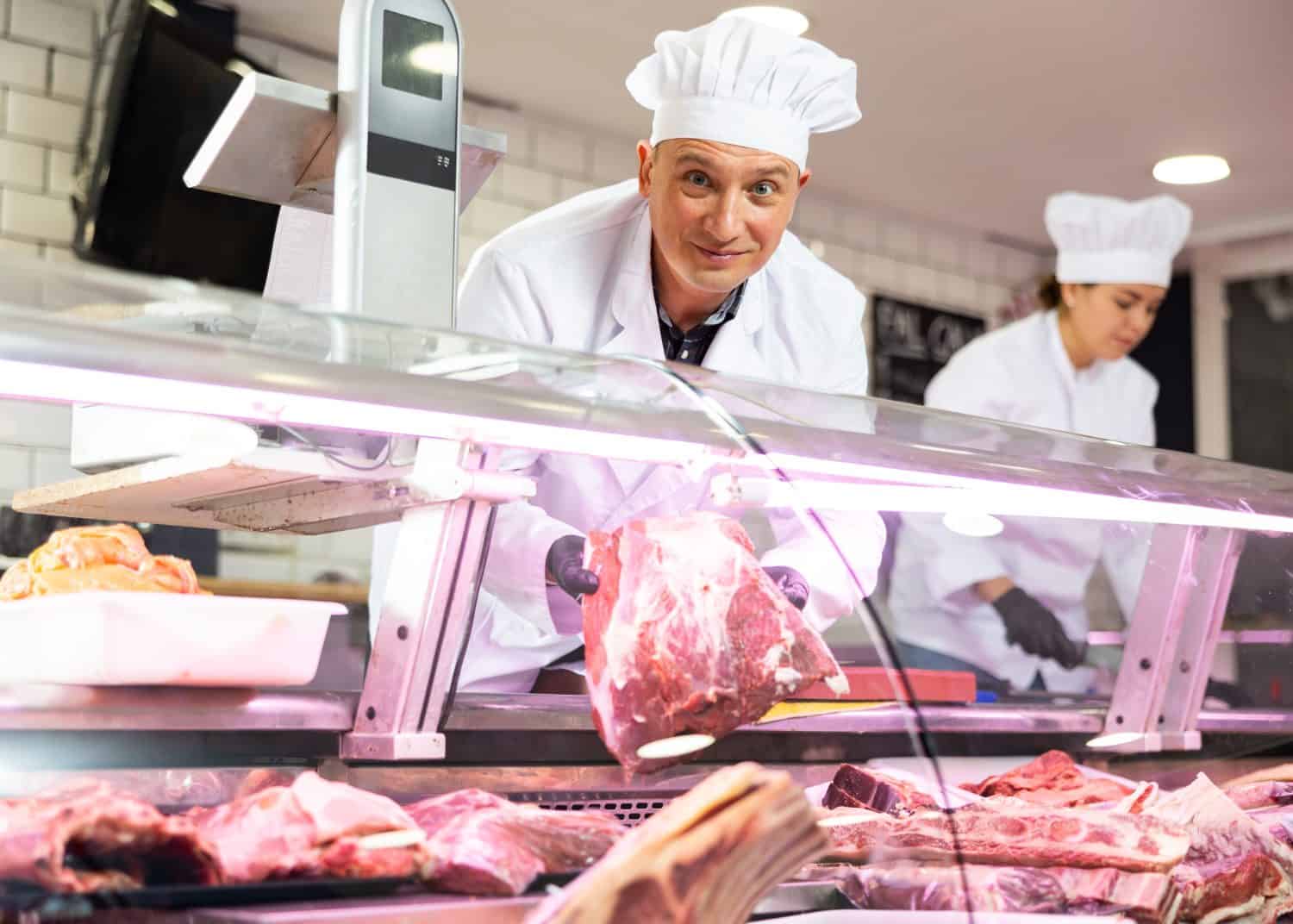
Supermarket steaks have a time and place. They’re designed to be cheaper than the alternative, which means a reduction in quality and a longer shelf life. For a single, solo meal that is meant to be a cheap treat, a supermarket steak might be fine. However, if you’re looking for quality—maybe you’re trying to impress someone—you’re much better off heading to a local, independent butcher. There are several notable factors that an independent butcher can help you with that a supermarket steak can’t compare to.
Firstly, independent butchers allow you to choose meats based on their qualities rather than selecting from a rack of mass-produced cuts. Butcher cuts are fresher and better tasting. However, you’re also able to find out more about the meat’s sourcing. Information about how the farm raised the cows and which cuts are best for your situation are accessible at a butcher shop, but not in a supermarket aisle. Since butchers cut the meat in front of you, fewer preservatives are necessary to keep the meat fresh. Supermarket companies treat their meat cuts with preservatives and artificial colors to keep it physically fresher and looking fresher while giving it a longer shelf life.
Finally, supporting a small business is always a moral imperative when you can! It might not be financially feasible to get a butcher-cut steak every time you want to eat one but if you can save up a few butcher meals here and there, you’ll contribute to a smaller, local economy and get yourself a more wholesome and delicious meal.
Cutting Into the Steak Too Soon
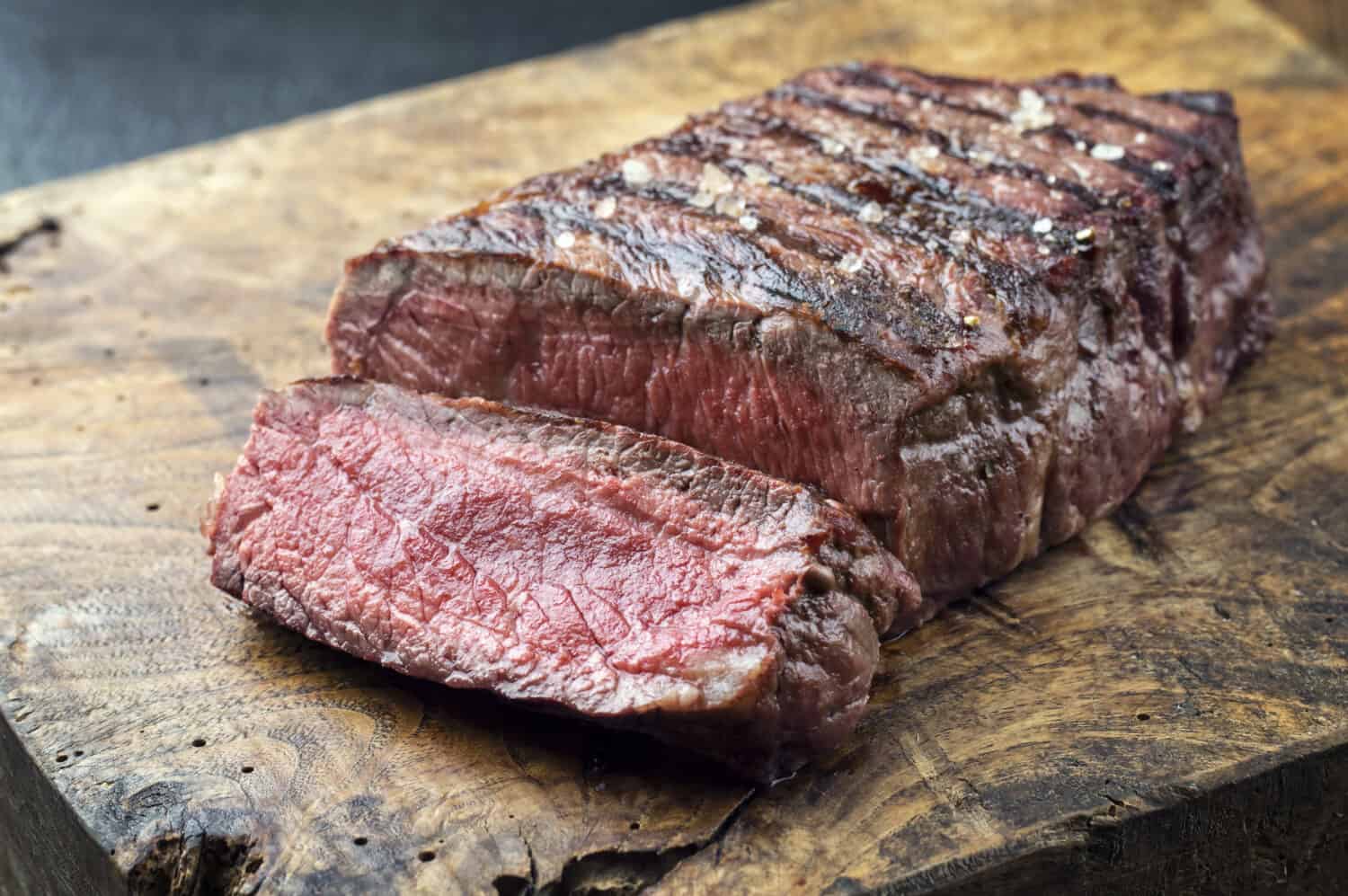
Cooking a perfect steak is a time-consuming task and will leave your mouth watering as the aromas of freshly cooked meat fill your kitchen. However, you shouldn’t cut into the steak right away! It can be tempting to serve it immediately as most people assume that the meal will get cold if you leave it too long. However, steaks have two factors that make rest important for the meal’s experience: liquid permeation and carryover cooking.
You need to cook steaks under high heat conditions to sear the outside of the meat and lock the juices inside. However, when exposed to high heat, the succulent juices retreat to the center of the steak. When you cut into the steak too early, all those juices spill out into a pool on the plate. Instead, let the steak sit for a few minutes. This allows the liquids inside the steak to permeate the meat. That way instead of turning it into a puddle on your plate, you get a juicy bite of steak every time you take a bite.
The other factor is carryover cooking. Your steak should be between 130 and 145 degrees Fahrenheit at the center when you take it off the heat. This temperature reading is lower than you might think because carryover cooking allows the core to continue to rise in temperature for a period before it starts dropping in temperature. So, if you cut in too early, it will actually be colder than if you let it sit. The current literature states that you should let it sit for about 1 minute per 100 grams of steak. So, a 14-16 ounce steak should sit for about 5 minutes.
Not Using a Meat Thermometer
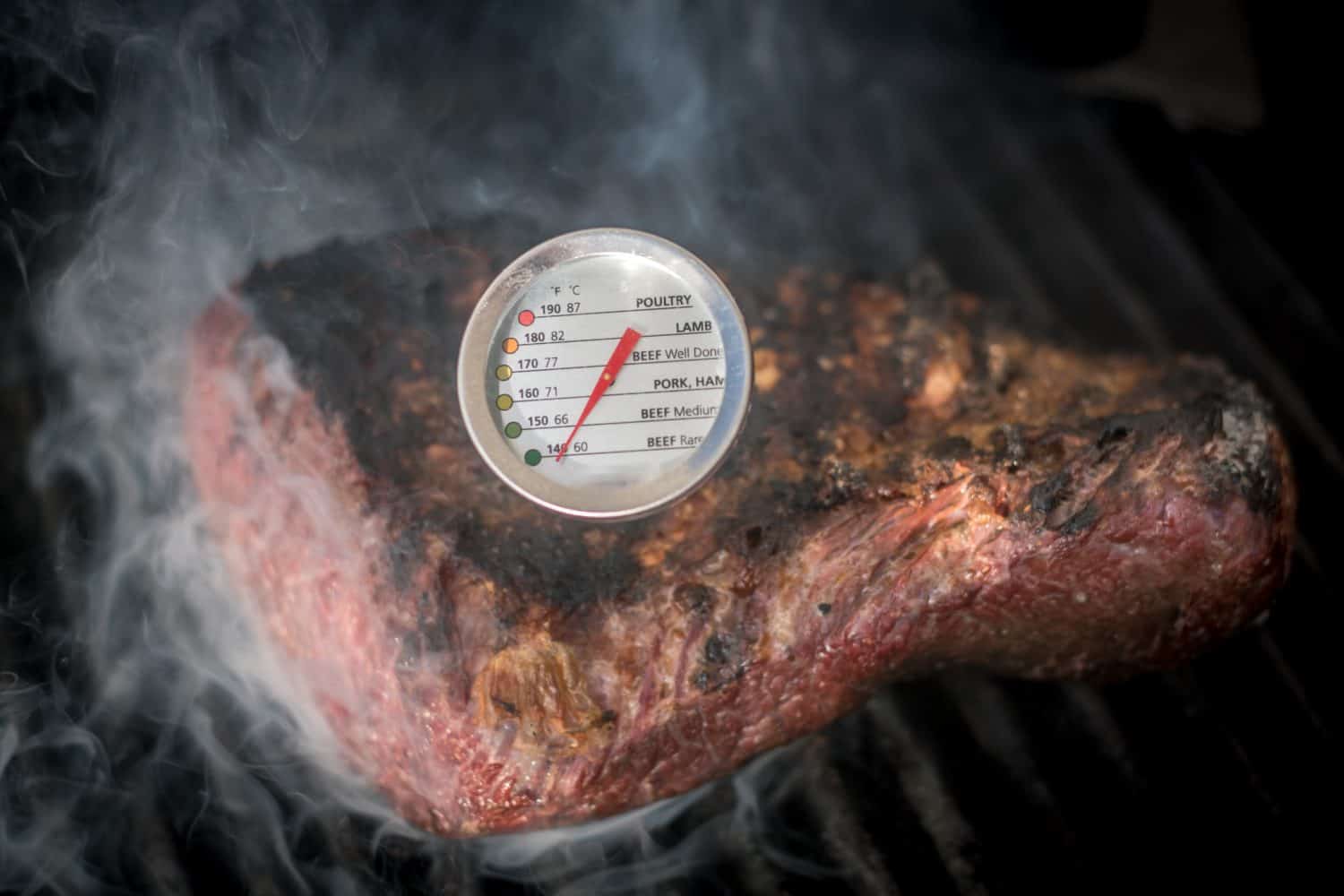
Visual cues are not adequate to determine whether you’ve cooked a hunk of meat properly or if it’s even safe to eat. While cooking your steak medium-rare won’t kill you, meat that hasn’t reached the proper internal temperature could make you very sick. You might think you’re slick, but the truth is that you can’t assess temperature by visual cues alone. Just because it looks done doesn’t mean it’s safe to eat. If you intend to check the cooking progress by poking it with a fork, you’ll be losing flavor and juices when you pierce the meat.
A meat thermometer, even a cheap one, can measure the internal temperature of the steak correctly and accurately. Using one ensures that you cook the steak to perfection but also that it’s safe to eat, which we think is more important. You’ll want your internal temperature to be around 135 degrees for medium-rare, 140 for medium, and 145 for medium-well. The lower temperatures allow for carryover cooking to take care of the rest.
Using an Oil with a Low Smoke Point
An oil’s smoke point is the point at which it gets so hot that it starts to smoke. It will reach its smoke point well before it boils. Letting an oil smoke will cause it to release toxic carcinogens and infuse the food with unpleasant flavors. Darker oils tend to have a lower smoke point than lighter oils, with some dark oils having a smoke point as low as 225 degrees.
If these oils start to smoke, you’ll end up with a smokey kitchen and meat that tastes like smoke, but not in a nice way you might end up with if you smoked the meat with a fire. Since you need to cook steak at high temperatures, the oil will smoke if it has a low smoke point. In some cases, the oil might start to smoke the second you throw it in the frying pan if you’ve preheated your pan properly.
If you’re going to brush your meat with oil before you fry or grill it, you’ll want to use a lighter oil like peanut, canola, or extra light olive oil. It’s worth noting that butter also has a pretty low smoke point. So, if you’re going to baste your steak with butter, save that for the end of the cooking process to keep the fat from smoking.
Not Cleaning the Grill
Cleaning isn’t fun, but cleaning a grill can be one of the most tedious parts of grilling. However, it’s necessary, especially if you’re making a steak and want it to stay juicy and delicious. Debris on the grill grate will make it sticky, causing the meat to adhere to the grate and tear when you try to remove it. You should clean your grill every time you use it, which might sound like a lot, but it will ensure that your grill is ready to use whenever you need it. Cleaning your grill doesn’t have to be a super intensive process, especially if you take care of it as soon as you’ve finished with the grilling process.
While the coals are still hot, you’ll want to use a wire brush to clean the gunk off the grate. Once the grate is clean, top it with a small amount of oil and the grill will be ready to use next time you need it.
Not Drying Your Steak
The caramelized crust we associate with a perfectly cooked steak is due to a chemical reaction known as the Maillard reaction. This reaction will only occur when the outside of the meat reaches somewhere between 280 and 330 degrees Fahrenheit. However, if the surface of the meat is too moist, the water on the outside of the meat will boil at 212 degrees Fahrenheit, far below the necessary heat point for the Maillard reaction. The boiling water will prevent the crust from caramelizing properly. This issue can cause you to overcook the steak while attempting to form the caramelized crust since you’re struggling to get the outside of the meat to the correct temperature. You’ll have to cook the steak longer and that can cause you to overcook it by accident.
It’s easy to avoid this issue by drying your steak before you throw it on the grill or pan. Simply pat the outside of the steak dry with a paper towel to remove the excess moisture from the surface.
Using a Nonstick Frying Pan
While it might be tempting to use a nonstick frying pan to prevent the meat from sticking to the pan when you try to flip it, this can actually be dangerous to your health. The nonstick coating has its own heat tolerance and it’s not as high as the temperatures needed to sear the outside of a steak.
Typically the heat tolerance of a nonstick pan is below 500 degrees, with some of the most durable coatings lasting up to 500 degrees and no higher. This means that the temperature environment for cooking steak could severely damage the nonstick coating and cause it to melt into the meat. Even if you cook the steak in the oven, this requires a heat environment of around 450 degrees or higher, which exceeds or is close to the top heat recommendations for most nonstick pans.
Not Preheating Long Enough

As we mentioned above, the heat environment for a perfect steak is high heat, with some recommendations exceeding 500 degrees Fahrenheit. Typically when you cook steak, you want to sear it, which means bringing the outside of the meat to a high heat very fast and causing the surface to caramelize and form into a crust. This requires your pan or grill to be extremely hot from the moment that the meat touches it. Preheating your pan, grill, or oven will ensure that the outside of the steak heats to the point where the Maillard reaction occurs quickly while preventing the outside from heating significantly faster than the inside and resulting in uneven cooking.
Not Finishing the Steak in the Oven
If you can’t achieve the heat environment needed to cook a steak perfectly in a pan, you can use a technique employed by many restaurants. You can sear the outside of the steak to create the crust in the pan. Then, take the pan and put it directly into the oven at 450 degrees. Remember that to do this the pan must be entirely made of cast iron or stainless steel. If it has a plastic handle it cannot go in the oven. Doing this will stop the searing process and start heating the meat’s inside without overdoing the outside.
You’ll need to adjust the cooking time based on how well done you want your steak. However, this method will typically overcook a thin cut—less than 1-inch thick—rather quickly. So if the meat isn’t thick enough, it’s probably best to keep it in the pan. (Hungry for steak but don’t want to cook? Here’s the best steakhouse in every state.)
